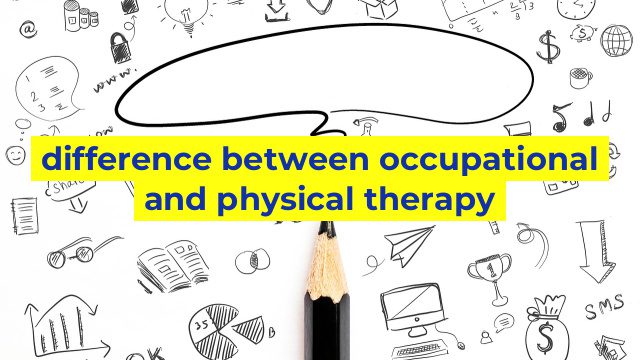Distinguishing Between Occupational and Physical Therapy
Occupational Therapy (OT) and Physical Therapy (PT) are two widely recognized forms of rehabilitation therapy that are often used to treat various health issues. Though they’re both focused on helping patients reach their full potential and recover from injuries, there are significant differences between the two that one must understand.
What is Occupational Therapy?
OT is a type of therapy that assists people in regaining their independence and enhancing their ability to perform daily activities. It can help individuals who struggle with motor, cognitive, or sensory-perceptual problems. Occupational Therapists work with patients of all ages and provide personalized training programs to improve their fine motor and cognitive abilities so that they can participate in daily activities such as dressing, bathing, cooking, and driving.
During the OT treatment, an occupational therapist evaluates a patient’s physical, mental, and emotional state and develops a plan that helps to improve their daily functioning. They may use various approaches such as exercises, adaptive equipment, and environmental adaptations to help patients regain the skills they need for daily living.
What is Physical Therapy?
Physical Therapy (PT) is a therapy that focuses on restoring a patient’s mobility and function after an injury or surgery. It’s designed to treat musculoskeletal injuries by strengthening, stretching, and mobilizing the body’s structures. PT can also be used to treat neurological and cardiovascular conditions.
Physical Therapists work with patients of all ages and is an integral part of the rehabilitation process after surgery or injury. They evaluate a patient’s condition and develop a treatment plan that is designed to restore their mobility, strength, balance, and flexibility. PT sessions may include exercises, stretching, massage, and other techniques to help the body recover.
The Difference Between Occupational and Physical Therapy
The primary difference between OT and PT is their approach to achieving their goals. OT focuses on improving an individual’s ability to perform daily living activities, while PT focuses mainly on the restoration of mobility and functional movement.
OT is suitable for individuals who struggle with cognitive or sensory-perceptual problems, physical weakness, or malformations. PT is suitable for individuals who have been injured, suffered orthopedic disorders, or had surgery.
In conclusion, both OT and PT therapy have unique and critical roles in the rehabilitation of patients with various disabilities, injuries, or medical conditions. Understanding the differences between the two forms of therapy can help you make an informed decision about which method is best suited to help you achieve your rehabilitation goals.
Table difference between occupational and physical therapy
| Occupational Therapy | Physical Therapy |
|---|---|
| Focuses on helping individuals develop or regain practical and functional skills they need to perform daily tasks at home, school, or work | Focuses on helping individuals improve their physical abilities, such as muscle strength, range of motion, and coordination, to perform specific tasks |
| Targets the cognitive, sensory, and emotional aspects that impact a person’s ability to participate in daily activities | Targets the musculoskeletal, neurological, and cardiopulmonary systems of the body |
| Interventions may include adaptive equipment, assistive technology, and environmental modifications to promote participation and independence | Interventions may include therapeutic exercises, manual therapies, and modalities to reduce pain, inflammation, and swelling |
| Common settings include hospitals, rehabilitation centers, schools, and outpatient clinics | Common settings include hospitals, private practices, sports clinics, and fitness centers |
| Goal is to improve the patient’s ability to perform activities of daily living (ADL), work, leisure, and social participation | Goal is to restore or enhance the patient’s physical function, mobility, and independence in specific tasks or activities |
